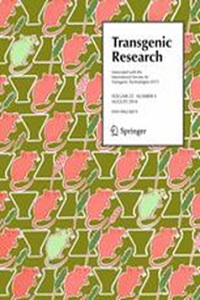An inverted repeat construct corresponding to a segment of the potato leaf roll virus coat protein gene was created under control of a constitutive promoter and transferred into a transformation vector with a heat inducible Cre-loxP system to excise the nptII antibiotic resistance marker gene. Fifty-eight transgenic events were evaluated for resistance to PLRV by greenhouse inoculations, which lead to the identification of 7 highly resistant events, of which 4 were extremely resistant. This resistance was also highly effective against accumulation in subsequent tuber generations from inoculated plants, which has not been reported before. Northern blot analysis showed correlation of PLRV specific siRNA accumulation with the level of PLRV resistance. Heat mediated excision of the nptII antibiotic resistance gene in PLRV resistant events was highly efficient in one event with full excision in 71 % of treated explants. On the other hand 8 out of 10 analyzed events showed truncated T-DNA insertions lacking one of the two loxP sites as determined by PCR and confirmed by sequencing flanking regions in 2 events, suggesting cryptic LB sites in the non-coding region between the nptII gene and the flanking loxP site. Accordingly, it is proposed to modify the Cre-loxP vector by reducing the 1 kb size of the region between nptII, loxP, and the LB.
Marker-free PLRV resistant potato mediated by Cre-loxP excision and RNAi
Citation: Orbegozo, Jeanette; Solorzano, Dennis; Cuellar, Wilmer J.; Bartolini, Ida; Roman, Maria Lupe; Ghislain, Marc; Kreuze, Jan. 2016. Marker-free PLRV resistant potato mediated by Cre-loxP excision and RNAi . Transgenic Research 25(6): 813-828.
2016-08-29
journal_article

